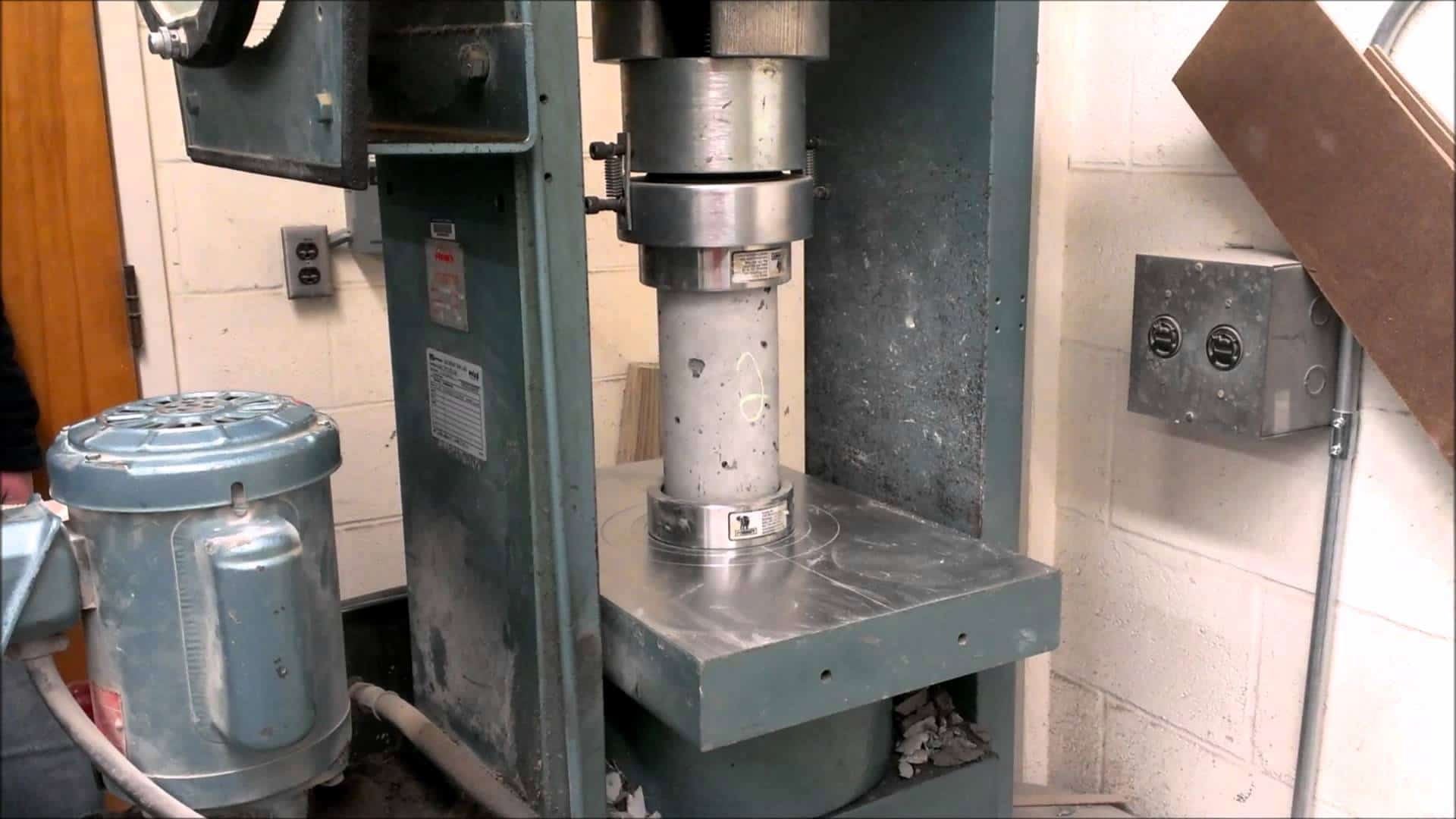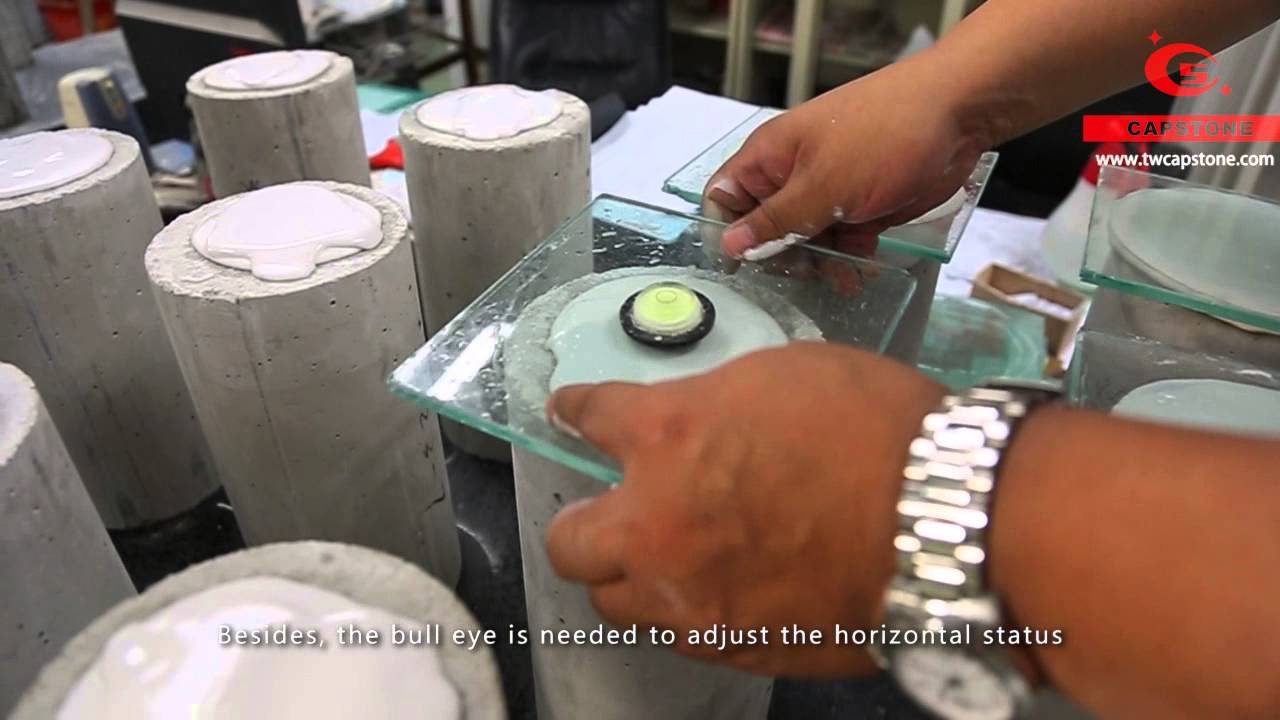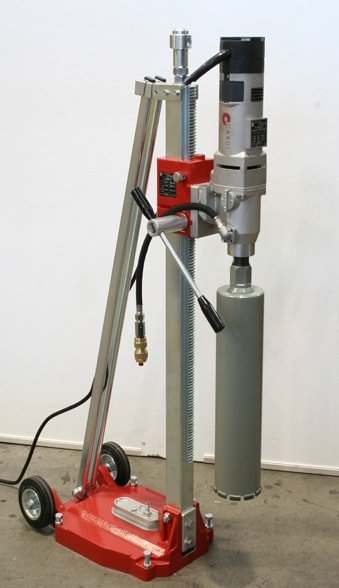Nowadays concrete core test is a famous and well-established method for the assessment of the compressive strength of the hardened concrete. Core testing enables visual inspection of the interior regions of a concrete member which is also related to strength estimation. Concrete coring also enables to evaluate other properties of the Reinforced Concrete Framed Structure by concrete core test.

Courtesy - ytimg
Learn other tests which are used to check the Hardened Concrete.
Rebound Hammer Test Procedure
Ultrasonic Testing Procedure
Concrete Pull Out Test
Carbonation Test
Chloride Content Test
How to get Idea About Steel Corrosion in Concrete?
Here are some precautions for concrete core test and its procedure. We also discuss the uses of concrete coring sample, the factors that affect the compressive strength of the concrete core test.
Precaution for Concrete Core Test:
01. The concrete should be 28 day old for drilling the core.
- The minimum core diameter shall be three times the nominal maximum size of coarse aggregate. The length of test specimen should be between 1.9 and 2.1 times the diameter.
- High lengths can be trimmed for specimens having low length and correction factor needs to be applied in the compressive test.
02. Place the drilled core in non-absorbent containers within 1 hour to prevent moisture loss from the specimen.
- Use minimum water when sawing the ends of the concrete core and it should be done within 2 days from the drilling. The ends of core specimen shall be flat and perpendicular to the longitudinal axis.
03. Maintain core at ambient temperatures and protect it from the direct sunlight. Allow the cores to remain in the sealed plastic bags or non-absorbent containers for at least 5 days before testing.
04. Measure the height of the capped or ground specimen to the nearest 2 mm and compute this to calculate the height-diameter ratio (H/D Ratio).
- In concrete core test, it is essential that the cap should be thin, preferably 1.5 to 3 mm and the capping material should not be weaker than the material of the core. Capping may be done by gypsum plaster or sulphur mortar on the hardened concrete specimen.

Courtesy - ytimg
- Measure the core diameters to nearest 0.2 mm and when the differences in concrete core diameters do not exceed 2% of their average then measure to nearest 2 mm.
- Do not test core if the difference between smallest and largest diameter of the concrete core exceed 5% of their average.
- In concrete core test, the core specimen should be tested within 7 days after drilling.
05. It is necessary to multiply with correction factors to the result when calculating the compressive strength by concrete core test.
Concrete Core Test Procedure:

Courtesy - controls-group
Concrete cores are usually cut by means of the rotary cutting tool with diamond bits. A cylindrical specimen is obtained with its ends being uneven, parallel, and square and embedded pieces of reinforcement.
The cores are visually inspected and photographed for giving specific attention towards compaction of concrete (air void visualisation), distribution of aggregate and presence of steel, etc. The concrete core should then be soaked in water, capped with molten sulphur so as to make its ends plane, parallel and at the right angle. It is then tested in compression testing machine in a moist condition as per BS 1881: Part 4: 1970 or ASTM 42-77.
Report of Concrete Core Test Includes the Following Point:
- Identification mark
- The height of core
- Diameter of Core
- Application of maximum load with respect to the horizontal plane of the concrete
- Moisture condition history
- Time and date of sampling
- Time and date of testing
- Equivalent cube strength and compressive strength of specimen in MPa
Use of Concrete Core Sample:
- Strength and density determination
- Depth of carbonation of concrete
- Chemical analysis
- Water or Gas permeability
- Petrographic analysis
- ASHTO chloride permeability test
Factors Affecting the Compressive Strength of Concrete Core Test:
01. The compressive strength depends on shape, proportion, and size of the concrete core.
02. If the ratio of the diameter of the core to the maximum size of aggregate is less than 3 then the reduction in hardened concrete strength is reported. For hardened concrete which has 20 mm size aggregate, the core of 50 mm diameter has been tested to give 10% lower results than with 100 mm diameter cores.
03. It is reported that the presence of transverse reinforcing steel causes 5 to 10 % reduction in compressive strength of the core.
04. The value of H/D ratio (Height/Diameter ratio) should be minimum 0.95 and maximum 2. A higher ratio would cause a reduction in strength.
05. Concrete gains strength after 28 days and the increase over 28 days strength is 10% after 3 months and 15% after 6 months. Hence it is not easy to deal the effect of ageing on concrete core strength.
06. The effect in reducing the core strength appears to be higher in high strength of concrete (stronger concrete), and reduction has been reported as 15 % for 40 MPa concrete. However, a reduction of 5 to 7% is considered reasonable.
07. The strength of core reduces as the core is disturbed due to the drilling operation.
08. Site curing is invariably inferior to curing prescribed for standard specimens which have concrete mix design same as the concrete core. The in-situ concrete core strength is invariably lower than that of the standard specimen taken and tested during concreting operations.
Some of the NDT tests give indirect evidence of the concrete quality but destructive concrete coring gives the direct assessment of concrete strength by core sampling and testing. Concrete core test is, therefore most reliable and conclusive. It is a must while doing major repairing, rehabilitation, and retrofitting, etc. as it will give an idea about the strength of the structure.